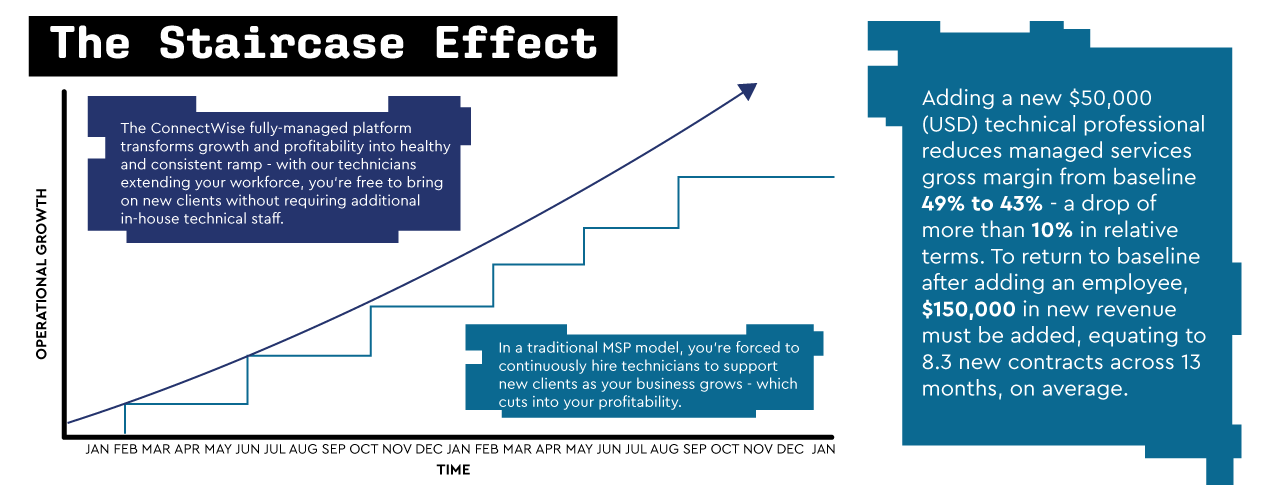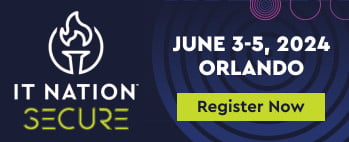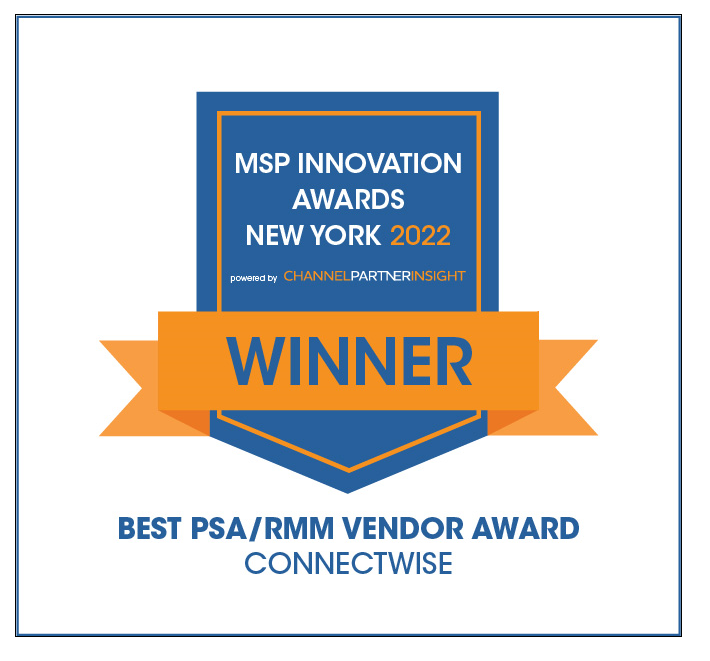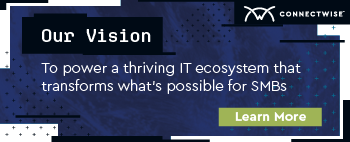MSP growth strategies: Hybrid service delivery
In the time of drone deliveries and instant gratification, it’s important for MSPs to be thinking about how they can build, buy, or partner to get the growth and scale they’re looking for. For full transparency, I did Google if drone deliveries were real—they are, but I’m skeptical.
Regardless, the concept still applies, and one of the main blockers of consistent growth for many MSPs is talent acquisition. These days, it’s becoming harder to find, hire, and onboard the talent you need at a cost that allows you to keep your expenses manageable. This has introduced some growing trends in the MSP sector: the hybrid work model and taking advantage of a partnership with an outsourced network operations center (NOC) and help desk. With so many financial and cultural benefits, it’s no surprise that many MSPs venture down this path.
Cost-effective team expansion
You may be asking yourself, “Why would I ever decide to hand off my service delivery to an outside team?”
For one, to improve the daily lives of your existing technical staff. Yes, it’s their job to perform certain duties, but at the same time, there’s work that they prefer to do, and other tasks that they wish didn’t exist. Coincidentally, those tasks are typically the mundane, repetitive, and low-ROI jobs that could be handed over to a well-equipped team.
Partnering with a NOC that proactively monitors the servers you manage 24/7 offers your staff a little more comfort on those nights and evenings they’re on-call. It could also mean fewer interruptions during dinner or a family outing.
In the end, your team will thank you for finding them more time to do the more advanced and gratifying work they enjoy while also giving them a little more liberty after hours.
Addressing the pain of change
While on the topic of technicians and how they may be impacted, another area of concern for most service delivery teams is the potential pain of change that could take place when implementing this new approach. Whether it’s the learning curve for a new toolset or the updates to their existing process, these concerns are not unwarranted. However, today, the more successful outside service delivery teams will offer MSPs the ability to integrate with their existing professional services automation (PSA) and their existing process flow.
The ConnectWise NOC Services™ and ConnectWise Help Desk Services™ teams offer MSPs the ability to tailor their services to align with how they manage their teams. This includes a direct integration from our ticket services to yours, including the more common PSAs MSPs use today.
Not to mention, the integration allows you to continue to work the way you want to work, keeping your existing service boards and queues and keeping communications intact with your end customers. You’ll even have the ability to escalate via a simple status change of the service ticket. These may seem like small details, but they will create a layer of comfort needed for your teams to adopt this hybrid model.
A-rated customers vs. D-rated customers
Your customers have a significant impact on the culture of your team. Of course, everyone would love it if they had 100% stellar clients, but it doesn’t always end up this way. Typically, I would refer to those customers that negatively impact your team as “D-rated” customers, in comparison to your preferred “A-rated” customers.
Clients could be “D-rated” for any number of reasons—from exhausting your team’s time on recurring issues that drive your margins way down to the morale-lowering clients that techs just dread doing work for and beyond.
I totally understand how this happens to MSPs. Most of the time, it doesn’t happen until after the customer is onboarded. But even while you’re growing, you can accrue some D-rated customers simply because you need to grow your recurring revenue—fully knowing they may be a handful. I refer to this phase in the growth curve as AFAB. Not to be confused with the whale hunting captain from Moby Dick either. It stands for “anything for a buck,” and this is the timeframe when you need the additional revenue to fund other potential ventures, continue making payroll, or even just to keep your teams at full capacity.
No matter what the reason, as you mature, it’s imperative that you work to retire your D-rated customers in lieu of more A-rated customers. The hybrid model gives you this opportunity. In some scenarios, thought leaders will coach on continuously raising your prices until they become A customers or they leave on their own. My methodology is more focused on a win/win scenario.
With the ability to enable ConnectWise Expert Services on a per-site basis, you have the option to outsource the work for those D-rated customers so that you’re able to open up capacity for your teams to onboard additional A-rated customers. This allows you to keep the existing revenue, increase the margins on said client, and bring in more clients aligned with your goals as their MSP. Not to mention, your staff will be ecstatic.
Assessing the cost
The last, and certainly not least, item I’d like to touch on is cost. On the surface, the decision to partner with an outside expert services team should be based on the numbers—such as your existing costs for delivering services.
If you have ConnectWise PSA™, you’d be able to review your financial dashboard, which would tell you exactly what your service delivery costs are based on the amount of time you’ve entered against the contract or agreement and the cost of the staff completing the work. You’d then be able to simply compare this cost to the cost of partnering with a vendor to determine if the decision is right financially. You’ll often see that your service delivery costs heavily outweigh the costs of partnering with an outside vendor. Not to mention, as your customer counts continue to grow, your team’s capacity should also continue to grow.
This means recruiting, hiring, and onboarding new staff—which can take months to facilitate and could delay the ROI on the new colleagues you bring on board. This means there’s always a lag in the value, and it’s not a linear growth model. Rather, it’s a stepped model in which your team’s capacity is either slightly below or slightly above the demand from your clients. Figure 1 below shows how your costs are impacted as you grow to meet your customers’ needs.

Figure 1: The Staircase Effect
Enhance service delivery with ConnectWise
While it would be great to see an increase in the onboarding of the hybrid service delivery model, the real purpose of this blog was to educate on one of the many ways MSPs can grow, scale, and increase their operational maturity. Whether it’s to offset your D-rated customers, improve the happiness of your staff, or even just to increase your profit margins, this hybrid approach to service delivery is a viable and proven way to find success.
By partnering with ConnectWise, you’ll easily be able to familiarize yourself with this model. From the proactive management of your servers with ConnectWise NOC Services to the secure data protection that comes with ConnectWise Co-Managed Backup™ and beyond, there are seemingly endless solutions that can help offload repetitive tasks and prove the value of a hybrid model.
So, whether you’re ready to jump in head first with multiple services or just want to offload the admin work each morning for your Tier 1 staff, ConnectWise is here and ready to assist you in this journey.


